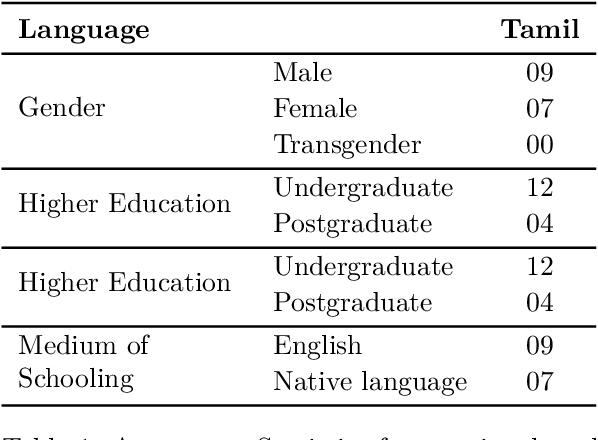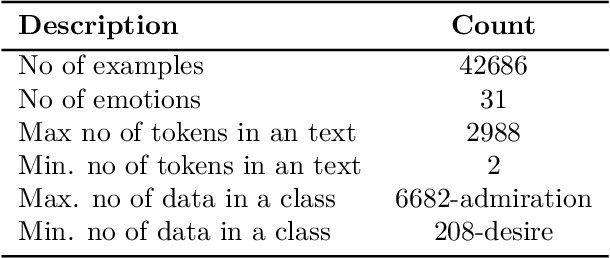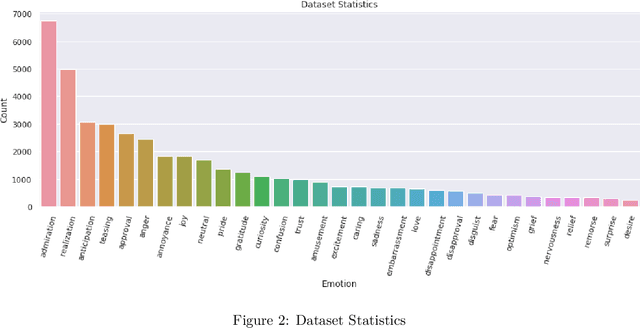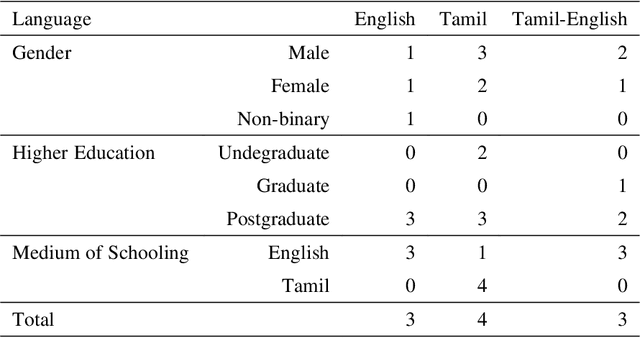John Phillip McCrae
TamilEmo: Finegrained Emotion Detection Dataset for Tamil
Feb 09, 2022



Abstract:Emotional Analysis from textual input has been considered both a challenging and interesting task in Natural Language Processing. However, due to the lack of datasets in low-resource languages (i.e. Tamil), it is difficult to conduct research of high standard in this area. Therefore we introduce this labelled dataset (a largest manually annotated dataset of more than 42k Tamil YouTube comments, labelled for 31 emotions including neutral) for emotion recognition. The goal of this dataset is to improve emotion detection in multiple downstream tasks in Tamil. We have also created three different groupings of our emotions (3-class, 7-class and 31-class) and evaluated the model's performance on each category of the grouping. Our MURIL-base model has achieved a 0.60 macro average F1-score across our 3-class group dataset. With 7-class and 31-class groups, the Random Forest model performed well with a macro average F1-scores of 0.42 and 0.29 respectively.
Dataset for Identification of Homophobia and Transophobia in Multilingual YouTube Comments
Sep 01, 2021



Abstract:The increased proliferation of abusive content on social media platforms has a negative impact on online users. The dread, dislike, discomfort, or mistrust of lesbian, gay, transgender or bisexual persons is defined as homophobia/transphobia. Homophobic/transphobic speech is a type of offensive language that may be summarized as hate speech directed toward LGBT+ people, and it has been a growing concern in recent years. Online homophobia/transphobia is a severe societal problem that can make online platforms poisonous and unwelcome to LGBT+ people while also attempting to eliminate equality, diversity, and inclusion. We provide a new hierarchical taxonomy for online homophobia and transphobia, as well as an expert-labelled dataset that will allow homophobic/transphobic content to be automatically identified. We educated annotators and supplied them with comprehensive annotation rules because this is a sensitive issue, and we previously discovered that untrained crowdsourcing annotators struggle with diagnosing homophobia due to cultural and other prejudices. The dataset comprises 15,141 annotated multilingual comments. This paper describes the process of building the dataset, qualitative analysis of data, and inter-annotator agreement. In addition, we create baseline models for the dataset. To the best of our knowledge, our dataset is the first such dataset created. Warning: This paper contains explicit statements of homophobia, transphobia, stereotypes which may be distressing to some readers.
 Add to Chrome
Add to Chrome Add to Firefox
Add to Firefox Add to Edge
Add to Edge